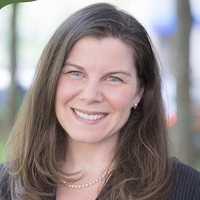Should You Still Have Bonds in Your Portfolio?
It’s easy to wonder if how we invest in bonds should change after the past few years. And if you’re taking a long-term view of investing, what should you do?


As bonds have struggled, producing losses in client accounts over the past couple of years, we have had more clients ask the question: Should bonds still have a role in the portfolio?
Traditionally, the answer has been that bonds provide diversification and income. They zig when stocks zag, providing income for spending needs. In finance terms, bonds have “low correlation” levels to stocks, and adding them to a portfolio would help to reduce the overall portfolio risk. However, over the last two years, as the Fed has worked to aggressively raise rates, this correlation has increased. What we saw in 2022 was the bonds fell right along with (and nearly as much as) stocks.
Compound that with the current state of interest rates. One of the most basic investing truisms is you should pursue investments offering a higher interest rate over investments with lower interest rates for the same level of risk. It just makes sense — of course you would want to earn more interest. Another concept involves how soon you get your investment back (liquidity). All else equal, you would want to make shorter-term loans where you would get your principal back sooner rather than later. The only way that you would be willing to lend your money for longer is if you received more interest to do so.
From just $107.88 $24.99 for Kiplinger Personal Finance
Become a smarter, better informed investor. Subscribe from just $107.88 $24.99, plus get up to 4 Special Issues

Sign up for Kiplinger’s Free Newsletters
Profit and prosper with the best of expert advice on investing, taxes, retirement, personal finance and more - straight to your e-mail.
Profit and prosper with the best of expert advice - straight to your e-mail.
However, in today’s interest rate environment, investors are earning more on short-term bonds than long-term bonds, as you can see in the chart below. And investors are earning even more on federally insured certificates of deposit (CDs). As the chart below shows, one-year CDs currently pay 5.8% compared to only 4.8% for a 10-year Treasury bond.

Given all this, it seems like a no-brainer to invest in the short-term options and receive the higher interest rates and better liquidity that come with them. If bonds aren’t fully dead, why not at least eliminate the default risk of lending to companies and invest only in short-term CDs and Treasury securities? At first glance, this strategy seems brilliant and, frankly, “too good to be true.” And, of course, that is the case. This is where having a long-term investment approach comes in.
What happens a year from now?
To illustrate the point, let’s think about the longer term. What happens 12 months from now when the one-year CD matures? At that point, investors must look to reinvest the proceeds they receive. Most market pundits expect that the previously mentioned aggressive increase in interest rates by the Fed will at minimum slow the economy dramatically, if not push the U.S. economy into a recession.
If that happens, overall interest rates will fall as the Fed looks to reduce interest rates to stimulate economic growth. That makes it highly likely that investors won’t earn the current 5.8% rate if they reinvest their CDs next year.
For those who invested in a two-year CD and accepted the lower 5.1% rate, they don’t have this concern, known as reinvestment risk, for an extra year. The longer term of the current investment, the further investors can push out the concern over reinvestment risk.
When long-term bond prices will rise
Additionally, just as longer-term bonds fell when interest rates went up, the prices of long-term bonds will rise when interest rates go down. That is because investors looking to reinvest the proceeds from their maturing CDs are willing to pay extra for long-term higher rates, which are no longer available in the marketplace.
The result is that bonds in general, and long-term bonds in particular, tend to do very well after the Fed stops raising rates (the Fed left rates unchanged at its latest meeting, in December). A study by Capital Group that looked at how bonds performed after past Fed rate-hiking cycles provides room for optimism — that maintaining a bond position in your portfolio may once again provide positive returns, income and diversification benefits.
According to that study, bonds have provided returns of over 10% in the 12 months following the end of the rate-hiking cycle and have compounded at 7.1% over the next five years, well above the long-term average of 4.8%.
Bonds still play a critical role in portfolios
We still believe that bonds play a critical role in client portfolios and that beginning to shift to longer-term bonds could benefit investors over the long-term, given today’s higher interest rates. It is easy to take a short one- to two-year timeframe and wonder if the world has changed, but successful investing requires a long-term focus of seven to 10 years, incorporating full market cycles.
When you’re working with a financial adviser, they will be there to help you keep that focus and to best position your portfolio to generate the long-term returns necessary to achieve your financial plan. Bonds continue to play an important role in that goal.
Related Content
- 10 Things You Should Know About Bonds
- Should You Buy Bonds Now? What to Consider
- Bond Basics: How to Buy and Sell
- What's the Deal With Bonds Right Now?
- Bond Basics: What the Ratings Mean
Profit and prosper with the best of Kiplinger's advice on investing, taxes, retirement, personal finance and much more. Delivered daily. Enter your email in the box and click Sign Me Up.

Stacy is a nationally recognized financial expert and the President and CEO of Francis Financial Inc., which she founded over 20 years ago. She is a Certified Financial Planner® (CFP®), Certified Divorce Financial Analyst® (CDFA®), as well as a Certified Estate and Trust Specialist (CES™), who provides advice to women going through transitions, such as divorce, widowhood and sudden wealth. She is also the founder of Savvy Ladies™, a nonprofit that has provided free personal finance education and resources to over 25,000 women.
-
 Nasdaq Leads as Tech Stages Late-Week Comeback: Stock Market Today
Nasdaq Leads as Tech Stages Late-Week Comeback: Stock Market TodayOracle stock boosted the tech sector on Friday after the company became co-owner of TikTok's U.S. operations.
-
 Disney’s Risky Acceptance of AI Videos
Disney’s Risky Acceptance of AI VideosThe Kiplinger Letter Disney will let fans run wild with AI-generated videos of its top characters. The move highlights the uneasy partnership between AI companies and Hollywood.
-
 Ask the Editor: Itemized Deductions
Ask the Editor: Itemized DeductionsAsk the Editor In this week's Ask the Editor Q&A, Joy Taylor answers questions on itemized deductions claimed on Schedule A of Form 1040
-
 Are You Putting Yourself Last? The Cost Could Be Your Retirement Security
Are You Putting Yourself Last? The Cost Could Be Your Retirement SecurityIf you're part of the sandwich generation, it's critical that you don't let the needs of your aging parents come at the expense of your future.
-
 I'm an Insurance Pro: It's Time to Prepare for Natural Disasters Like They Could Happen to You
I'm an Insurance Pro: It's Time to Prepare for Natural Disasters Like They Could Happen to YouYou can no longer have the mindset that "that won't happen here." Because it absolutely could. As we head into 2026, consider making a disaster plan.
-
 The Future of Philanthropy Is Female: How Women Will Lead a New Era in Charitable Giving
The Future of Philanthropy Is Female: How Women Will Lead a New Era in Charitable GivingWomen will soon be in charge of trillions in charitable capital, through divorce, inheritance and their own investments. Here's how to use your share for good.
-
 5 Smart Things to Do With Your Year-End Bonus, From a Financial Professional
5 Smart Things to Do With Your Year-End Bonus, From a Financial ProfessionalAfter you indulge your urge to splurge on a treat, consider doing adult things with the extra cash, like paying down debt, but also setting up a "fun fund."
-
 Are You a Gen X Investor? Here's How You Can Protect Your Portfolio From an AI Bubble
Are You a Gen X Investor? Here's How You Can Protect Your Portfolio From an AI BubbleAmid talk of an AI bubble, what's the best course of action for investors in their 50s and 60s, whose retirement savings are at risk from major market declines?
-
 Hey, Retirees: Put Your Charitable Gifts in a Donor-Advised Fund (and Enjoy Your Tax Break)
Hey, Retirees: Put Your Charitable Gifts in a Donor-Advised Fund (and Enjoy Your Tax Break)A donor-advised fund is a simple (really!), tax-smart strategy that lets you contribute a large, tax-deductible gift now and then distribute grants over time.
-
 If You're a U.S. Retiree Living in Portugal, Your Tax Plan Needs a Post-NHR Strategy ASAP
If You're a U.S. Retiree Living in Portugal, Your Tax Plan Needs a Post-NHR Strategy ASAPWhen your 10-year Non-Habitual Resident tax break ends, you could see your tax rate soar. Take steps to plan for this change well before the NHR window closes.
-
 Could Target-Date Funds With Built-In Income Guarantees Be the Next Evolution in Retirement Planning?
Could Target-Date Funds With Built-In Income Guarantees Be the Next Evolution in Retirement Planning?With target-date funds falling short on income certainty, retirement plans should integrate guaranteed income solutions. Here is what participants can do.